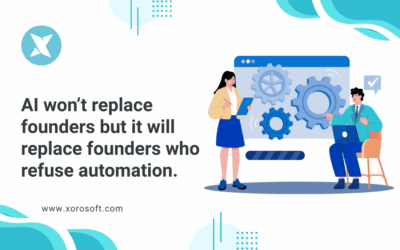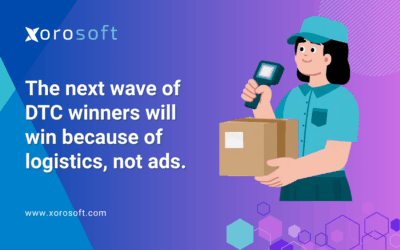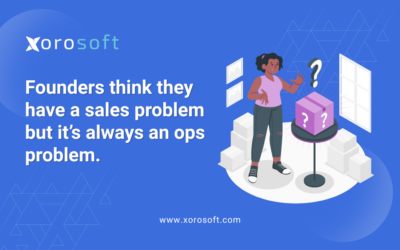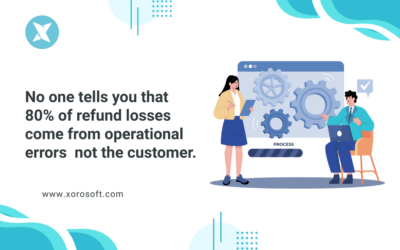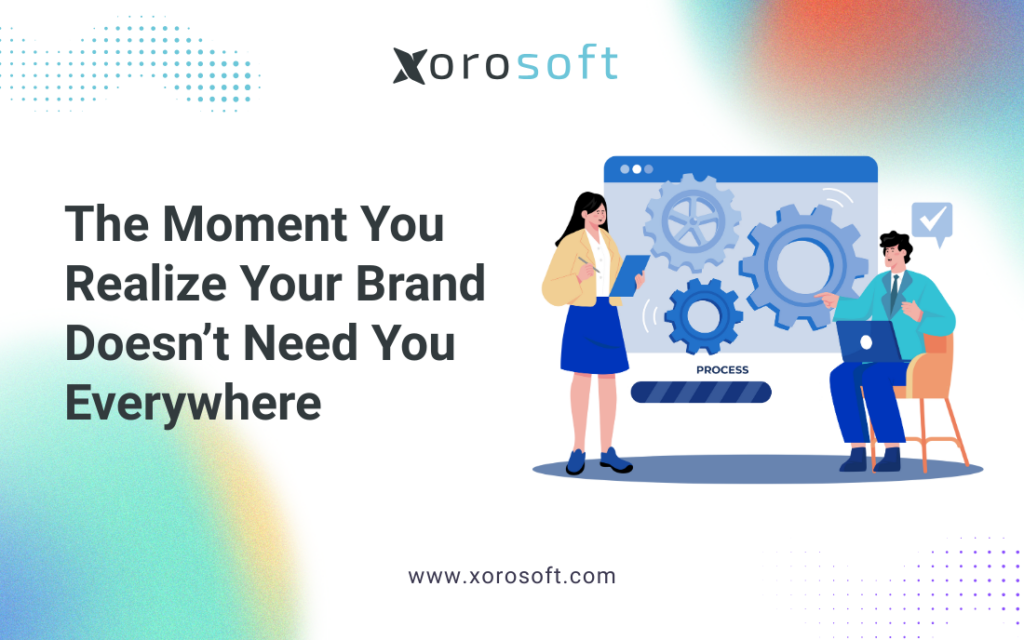
A Scalable Ecommerce ERP Platform Changes Everything
A scalable ecommerce ERP platform turns daily operations from frantic to predictable. Consequently, you stop approving every refund, and you stop babysitting each reorder. Moreover, your team finally trusts the data because systems stay in sync. As a result, you focus on growth initiatives while routine work runs on rails. In short, when the back office is connected, you no longer need to be everywhere at once. Furthermore, you gain back the time to think strategically instead of reactively.
Why a Scalable Ecommerce ERP Platform Ends Operational Drift
However quickly your brand grows, spreadsheets and disconnected apps eventually slow you down. Therefore, decisions creep, errors compound, and momentum fades. Additionally, finance lags behind fulfillment, which creates confusion during close and after promotions. In contrast, a scalable ecommerce ERP platform synchronizes channels, warehouses, and accounting in real time, so your numbers finally agree.
-
Disconnected systems create duplicate data and manual fixes.
-
Manual reconciliation steals hours from finance and ops.
-
Reactive reorders trigger stockouts and rush shipping.
-
Founder bottlenecks delay approvals and promotions.
-
Lagging financials hide margin issues until it’s too late.
Accordingly, one integrated foundation is not a luxury; it is a requirement. Likewise, it becomes the single truth your team can rely on every day.
What Your Workday Feels Like After the Platform Goes Live
First, you log in and see orders, inventory, and cash at a glance. Next, you notice that returns, refunds, and purchase orders reconcile without drama. Additionally, the warehouse picks faster because tasks are batched and scanned. Consequently, your team spends time improving outcomes instead of fixing errors.
Therefore, you see benefits such as:
-
Real-time visibility across every channel.
-
Pick accuracy near 99% and error rates under 2%.
-
Order cycle times dropping by 40–50%.
-
Cash conversion speeding up by 2×.
Ultimately, clarity compounds into growth. Besides, your employees feel less stressed because data becomes predictable.
Evidence in Practice: One Brand’s Shift from Reactive to Predictable
Company: Willow & West (home goods)
Situation: Strong DTC demand, constant stockouts, and late reporting.
Team: Founder, COO, five-person ops.
Before: four hours per day of spreadsheet reconciliation; 84% pick accuracy; 3.5-day order cycle time; 28-day cash conversion.
After a scalable ecommerce ERP platform (Xorosoft ERP + Shopify): zero manual reconciliation; 99.3% pick accuracy; 1.6-day order cycle time; 14-day cash conversion.
“Because everyone now sees the same numbers, we stopped arguing about data and started planning growth,” the COO said.
Accordingly, the team shifted from firefighting to forecasting. Consequently, morale improved because success was measurable.
Six Steps to Build a Business That Runs Smoothly
Notably, each step below includes a goal → action → metric. Therefore, you can implement without guesswork and measure progress as you go.
1) Centralize Systems with a Scalable Ecommerce ERP Platform
Goal: create one version of truth.
Action: connect Shopify, Amazon, your warehouse/3PL, and accounting into a single scalable ecommerce ERP platform.
Metric: inventory variance across channels at 0.
Consequently, every report matches instantly. Moreover, it eliminates redundant spreadsheets that cause friction.
2) Automate Order Flow from Cart to Carrier
Goal: reduce human handoffs.
Action: enable rules for routing, batching, picks, and labels; integrate scanners.
Metric: pick accuracy >99%; shipment error rate <2%.
As a result, fulfillment speed increases without extra headcount. Likewise, customer satisfaction rises automatically.
3) Keep Accounting Truly Real Time
Goal: eliminate month-end scramble.
Action: sync invoices, fees, payouts, and refunds automatically to QuickBooks or Xero.
Metric: monthly close time cut by 50%.
Additionally, gross margin becomes visible daily—not monthly. Therefore, finance can plan cash flow proactively instead of reactively.
4) Forecast Demand Before It Hurts
Goal: avoid both stockouts and overstock.
Action: use demand models in the scalable ecommerce ERP platform to generate PO recommendations.
Metric: stockout rate <1%; inventory turnover improves quarter over quarter.
Consequently, cash is freed for growth. Besides, vendors trust you more because orders arrive on time.
5) Empower People with Roles, Alerts, and Approvals
Goal: reduce founder dependency.
Action: set role-based permissions and automated approvals for routine tasks.
Metric: 80% of operational decisions made without executive intervention.
Therefore, leaders spend time on strategy, not status checks. Even so, exceptions can still trigger immediate notifications for visibility.
6) Review Metrics and Refine Weekly
Goal: maintain continuous improvement.
Action: track pick accuracy, order cycle time, on-time fulfillment, and cash conversion.
Metric: 10–15% productivity gains per quarter.
In short, small improvements stack into durable advantages. Furthermore, sharing progress openly helps drive accountability.
Seven Days to a Working Prototype on a Scalable Ecommerce ERP Platform
Because momentum matters, here’s a fast start that teams actually follow. Meanwhile, results begin appearing almost immediately.
| Day | Focus | Outcome |
|---|---|---|
| Day 1 | Map Shopify, Amazon, warehouse, and accounting touchpoints. | Bottlenecks listed by impact. |
| Day 2 | Compare scalable ecommerce ERP platform options on G2. | Two top candidates shortlisted. |
| Day 3 | Demo Xorosoft ERP for Shopify with a sample of your data. | Confidence in fit and usability. |
| Day 4 | Define KPIs: pick accuracy, cycle time, and cash conversion. | Baselines captured. |
| Day 5 | Connect channels; test SKU and order sync both ways. | Real-time updates verified. |
| Day 6 | Train ops and finance; assign roles and alerts. | Ownership distributed. |
| Day 7 | Go live; monitor dashboards daily. | Manual work reduced by half. |
Afterward, keep iterating, because adoption deepens with quick wins. Instead of endless planning, you gain traction immediately.
The Numbers That Prove Integration Works
Because measurement drives trust, compare outcomes side by side:
| Metric | Before | After | Improvement |
|---|---|---|---|
| Pick accuracy | 85% | 99% | +14 pts |
| Order cycle time | 3.5 days | 1.8 days | −49% |
| Cash conversion | 30 days | 15 days | 2× faster |
| Stockout rate | 5% | <1% | −80% |
| Ops workload | 50 hrs/week | 20 hrs/week | −60% |
Accordingly, when the back office aligns, every KPI moves together.
How to Choose a Scalable Ecommerce ERP Platform You Won’t Outgrow
Because switching later is costly, evaluate for both today and tomorrow. Moreover, look for features that adapt as you expand:
-
Real-time dashboards that show orders, stock, and profit by channel.
-
Two-way integrations with Shopify, Amazon, and accounting.
-
Automation for routing, returns, labeling, and reconciliation.
-
Role-based access and clear approvals for accountability.
-
Scalability for new warehouses, currencies, and regions.
-
Ease of use so non-technical teams adopt it quickly.
Additionally, read independent reviews on G2 and test Xorosoft’s Shopify app to validate workflows with your own catalog.
Life After the Switch: What the Next Six Months Look Like
Initially, fires fade because orders flow without manual checks. Then, finance closes on time because payouts, fees, and refunds sync automatically. Moreover, forecasting improves because sales patterns feed purchasing with live data. Consequently, leaders redirect time to growth—new SKUs, partnerships, and merchandising—rather than reconciliation.
Ultimately, a scalable ecommerce ERP platform becomes quiet infrastructure, while your team becomes an engine for expansion. Furthermore, decision-making improves because everyone trusts the numbers.
Practical Habits That Keep the Flywheel Turning
Because habits make systems stick, establish these routines:
1. Weekly KPI reviews, therefore issues surface early.
2. Short daily stand-ups, so blockers disappear quickly.
3. Documented workflows, therefore onboarding speeds up.
4. Quarterly goal resets, so improvements remain visible.
5. Celebrate metric wins, because adoption follows recognition.
Accordingly, culture shifts from “heroics” to “systems thinking.” Moreover, people feel empowered rather than exhausted.
Leadership Perspective: Seeing the Business from the Balcony
Once the back office is connected, you finally get altitude. Consequently, you can watch cash, inventory, and demand move together. Moreover, you can choose promotions with confidence and launch channels without fear of overselling. In effect, strategy becomes simpler because the data is trustworthy. Therefore, your brand grows more smoothly and more profitably. Even so, continued discipline ensures long-term consistency.
Key Takeaways for Founders and COOs
-
A scalable ecommerce ERP platform unifies sales, inventory, fulfillment, and accounting.
-
Therefore, errors fall, orders accelerate, and cash conversion improves.
-
Moreover, teams gain autonomy because workflows and approvals are built in.
-
Consequently, you spend time on growth instead of firefighting.
-
Finally, small weekly improvements compound into a durable advantage.
In short, when the back office is integrated, your brand does not need you everywhere—by design. Furthermore, operations finally feel sustainable.
Helpful Resources While You Evaluate
-
Compare top-rated platforms on G2 for an outside view.
-
Explore a Shopify-native option with Xorosoft ERP to see live channel sync.
-
Review fundamentals with Gartner’s ERP overview to align teams on terminology.
- Book a live demo today
Afterward, select the platform that gives you speed today and scale tomorrow. Besides, investing once in a scalable foundation saves years of operational headaches.
Search
Categories
- ACCOUNTING & FINANCIALS 62
- Business 1
- E-COMMERCE & CHANNEL INTEGRATIONS 72
- ECommerce 3
- ERP 828
- FINANCE & ACCOUNTING 9
- INVENTORY & OPERATIONS 12
- Inventory Management Software 1
- OPERATIONS & INVENTORY 72
- PROCUREMENT & SUPPLY CHAIN 9
- PURCHASING & SUPPLY CHAIN 62
- Software 1
- WAREHOUSE & FULFILLMENT WMS 65
- WMS & FULFILLMENT 12
Recent Posts
-
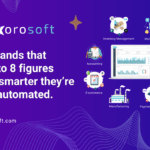 The brands that scale to 8 figures aren’t smarter — they’re more automated.
The brands that scale to 8 figures aren’t smarter — they’re more automated. -
 In 3 years, every brand will use AI forecasting. The question is: will you?
In 3 years, every brand will use AI forecasting. The question is: will you? -
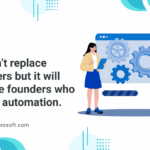 AI won’t replace founders — but it will replace founders who refuse automation.
AI won’t replace founders — but it will replace founders who refuse automation. -
 The next wave of DTC winners will win because of logistics, not ads.
The next wave of DTC winners will win because of logistics, not ads. -
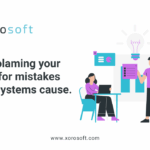 Stop blaming your team for mistakes your systems cause.
Stop blaming your team for mistakes your systems cause.
